Spiritual alchemy and seven Rays and five Elements
The word alchemy is derived from the Arabic expression "al-kimia". The alchemy is actually based on a knowledge handed down from egypt, which belonged to the secret doctrine. In China the Neidan was born.
In India the Raseshvaras (gods of Rasa and Natha Siddhas) carried out such practices.
Spiritual alchemy is also a branch of hermetics that represents the transformation process in a secret language of pictures, similar to tantra. The slogan here is OPUS MAGNUM, which leads externally to the stone of first order and then to the so-called 'stone of the wise' or 'red lion' and finally to the transmutation.
Cycles
This not uniformly illustrated process passes periodically cycles of the four (5) element-principles or of 7 planetary cycles (Mercury, Saturn, Jupiter, Luna, Venus, Mars, Sol - please look at the Basilius -picture at the bottom).
A fifth superordinate element corresponds to the akasha or sol cycle, which often corresponds to a holy mountain.
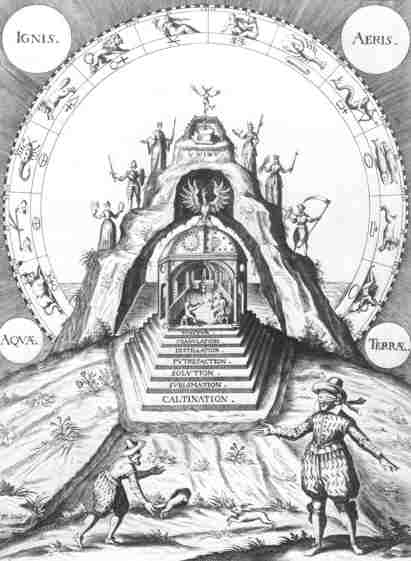
Michelspacher Cabala: Spiegel der Kunst und Natur, 1615 - with step 9-18 of the path
Especially the Rosicrucians and the esoteric secret freemasonry with the master-builder Hiram Abiff and the columns Jachim and Boaz stood in the call of such aspirations.
India
The Śarīrayoga contains Vedha ('Transmutation') and Śarīrayoga ('Transusbstantiation'), which together signify the end of the alchemical work. As such, they are the theme of the sixteen earlier saṃskāras as alchemical operations per se. This Yoga is also described in Gautama: 'Nyayasutra with Vatsyayana's Nyayasutrabhasya'.
A number of medieval books have been preserved by various authors, among others :
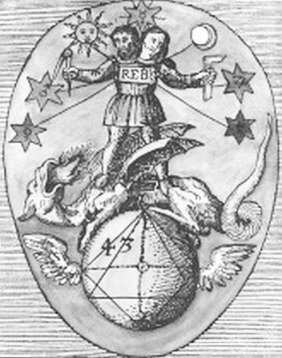
- Hermetic Museum
- Book of Lambspring
- Philosophia Reformata
- Rosarium Philosophorum
- Turba Philosophorum
- Coelum philosophorum
- Theatrum Chemicum
- Speculum veritatis
- Splendor Solis
- Atalanta Fugiens(Maier)
- Compass of the wise
- Opus Mago-cabbalisticum Et Theosophicum
- Des Hermes Trismegists wahrer alter Naturweg
- Mutus Liber - the plantstone
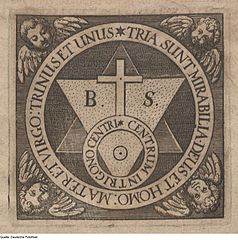 |
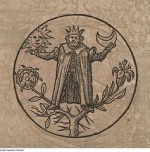 |
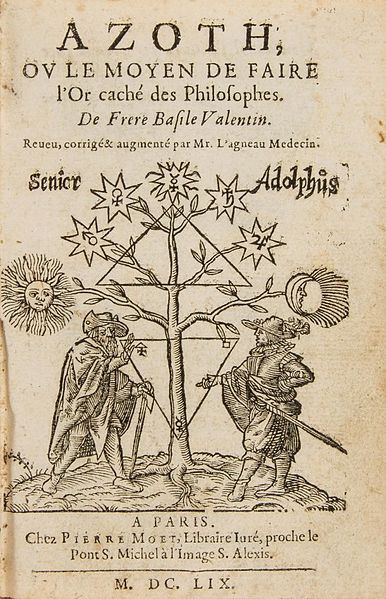 |
| Centrum in rigono centri | Basilius - the Adept | Azoth |
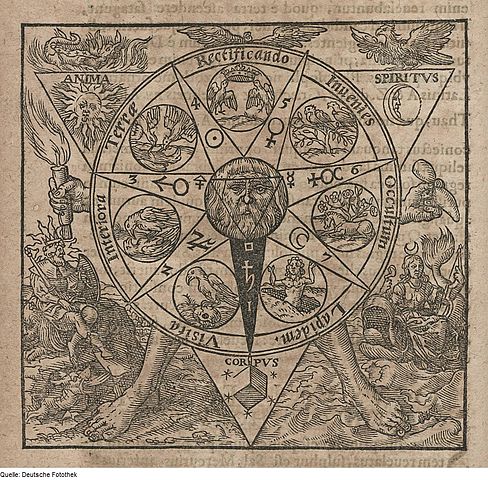 |
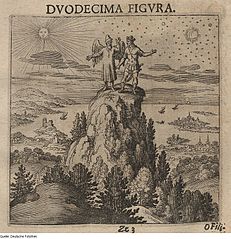 |
|
|
Basilius Valentinus : 7 Steps of the cycle and 7 planets |
Duodecima figura - Emblem Nr. 12 from the Musaeum Hermeticum 1678 | --- |
- J. Helmond, Die entschl. Alchemie(Alchemy Unveiled, 1710);
- O. Wirth : Lehrbrief zur hermetischen Alchemie, Schleierwelten-Verlag, 2007, ISBN-10: 3937341277 ISBN-13: 978-3937341279
- Materia Prima, Valentinus, Frankfurt, 1613
- Alchemy collection; Vol. 2012;
- Boschius : De arte Symbolica( Online)
- De elixier vitae
- Entstehung und Ausbreitung der Alchemie: Ein Beitrag zur Kulturgeschichte, Edmund O. von Lippmann, ISBN 978-3-642-50949-0
- Alchemie: Lexikon einer hermetischen Wissenschaft, Karin Figala (C.Priesner- A. Diefenthal), Verlag: C.H.Beck; 1998, ISBN-10: 3406441068 ISBN-13: 978-3406441066
- Kaya Kalpa and the Alchemical Tradition in Ayurveda and Siddha Medicine
- Alchemical Traditions: From Antiquity to the Avant-Garde, Aaron Cheak, Numen Books, 2013, ISBN-10: 0987559826 ISBN-13: 978-0987559821, S. 213 : Sarirayoga
References
- ↑ http://www.internetloge.de/symhandb/symb.htm
- ↑ The Alchemical Body: Siddha Traditions in Medieval India, David Gordon White, University of Chicago Press, 1998
Weblinks
- The Opus Magnum
- Alchemywebsite : Levity mit Texten und vielen Abbildungen alter Werke
- Alchemywebsite : Texts primarily dealing with allegorical, philosophical and spiritual alchemy
- Alchemywebsite : 17th Century -Alchemical Texts
- Materia Prima u.a.
- Freimaurerwiki über die Hermetische Freimaurerei
- Was ist Alchemie? von Christian Salvesen
- Alchemy_Booklet
- Alchemie - etwas vereinfacht
- The Project Gutenberg eBook : The Story of Alchemy and the Beginnings of Chemistry, M. M. Pattison Muir
- Tarot and alchemy
- Wiki-commons : Bilder zur Alchemie
- Das Rosarium
- Aurora consurgens
- Albedo
- Thelemapedia about Alchemie
- Alchemical diagrams
- Alchemyjournal
of Spirituality
universal-path.org